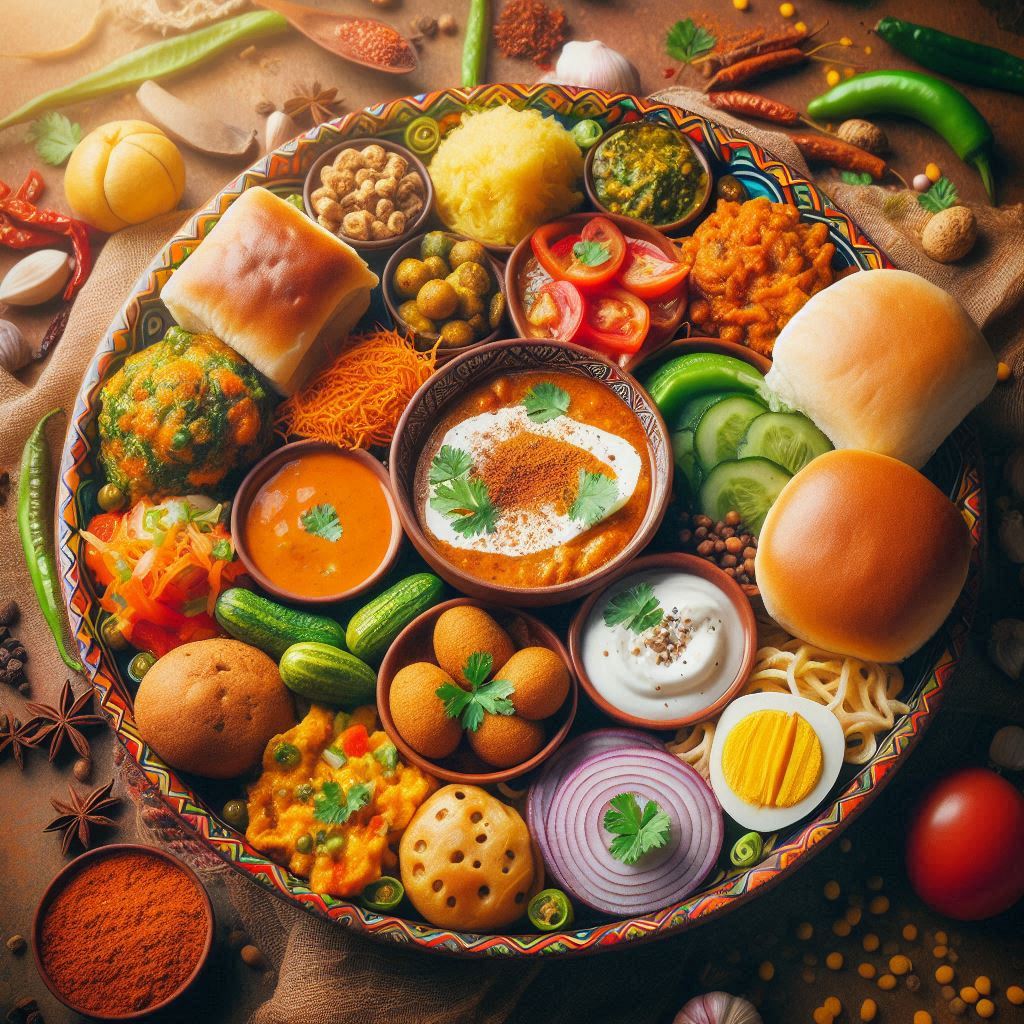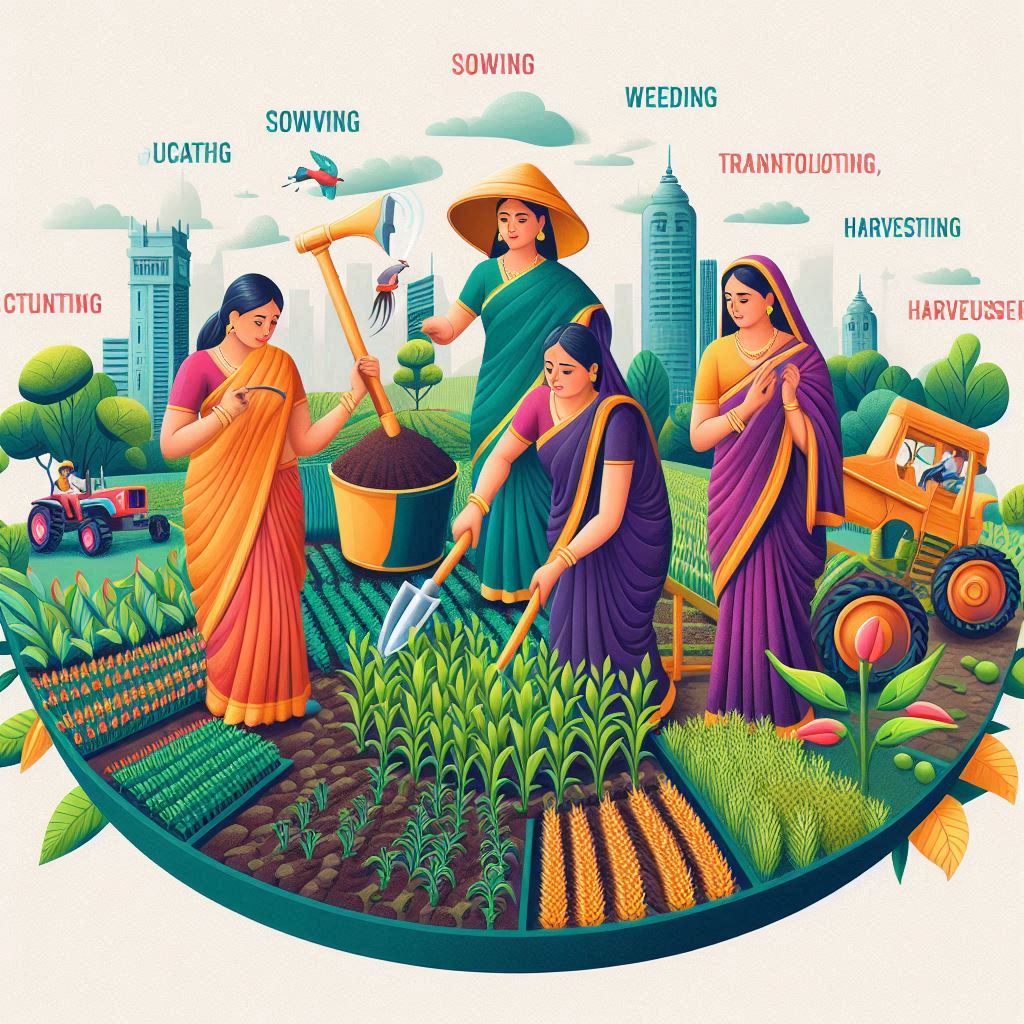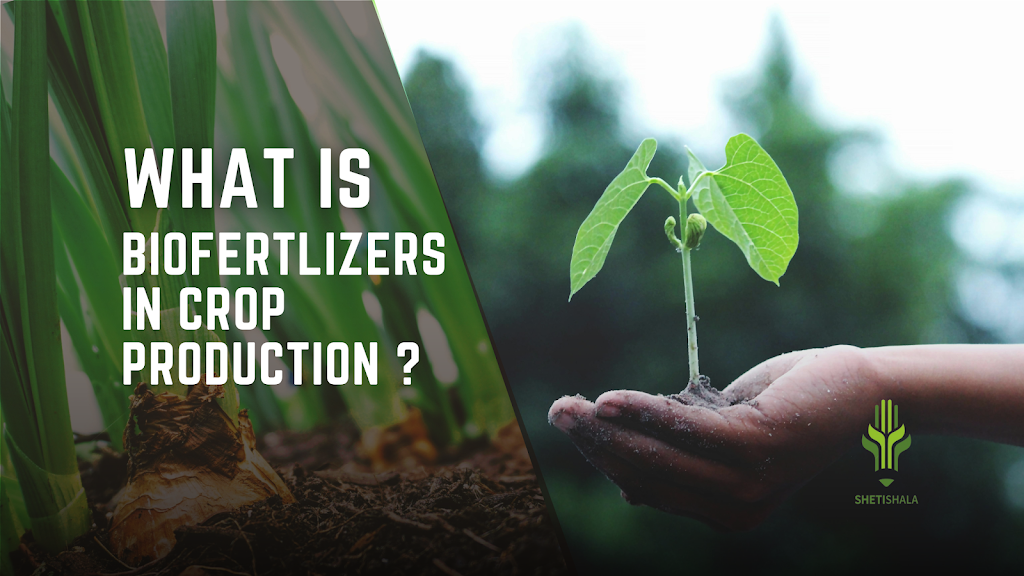Agriculture in Maharashtra is an important topic to study thoroughly. Maharashtra, a state in western India, boasts a diverse agricultural landscape. From the
fertile plains of Vidarbha to the lush Konkan coast, the state cultivates a wide variety of
crops thanks to variations in climate, soil conditions, and specific regional expertise.
Soil Types and Rainfall Patterns
The soil types in Maharashtra vary depending on the region. The Konkan coast has
laterite and acidic coarse, shallow soil suitable for certain crops like cashew nuts. The
western ghats have light laterite and reddish-brown soil, well-suited for vineyards.
The central plains have black and deep clay soil ideal for crops like cotton and jowar. The
eastern plains have vertisol (black cotton soil), which can support a variety of crops.
These variations influence the crops grown in different regions.
Uneven rainfall patterns across the state necessitate cultivation of drought-resistant
crops in some areas like Vidarbha and Marathwada. In contrast, water management
techniques are crucial for flood-prone regions like the Konkan coast.

Climate and Soil Diversity
● Konkan Coast (Raigad, Ratnagiri, Sindhudurg):
The Konkan coast experiences a tropical monsoon climate with high humidity and
abundant rainfall. The laterite and acidic soil here is well-suited for tree crops like
Alphonso mangoes, a geographically protected variety known for its sweetness
and aroma, cashew nuts, and coconut palms.
● Western Ghats (Satara, Sangli, Kolhapur):
The Western Ghats have a moderate climate with well-distributed rainfall. The light
laterite and reddish-brown soil support vineyards producing grapes for
winemaking in regions like Nashik, while some regions cultivate spices like pepper
in Kolhapur.
● Central Plains (Marathwada – Chhtrapati Sambhjinagar, Jalna,
Parbhani):
Maharashtra’s central plains have a hot and semi-arid climate with black and deep
clay soil. This region is a major producer of cotton, particularly in Akola and
Wardha districts, jowar, and bajra, which are well-adapted to the drier conditions.
● Eastern Plains (Vidarbha – Nagpur, Amravati, Yavatmal):
The eastern plains experience a dry and hot climate with vertisol (black cotton
soil). Here, farmers cultivate pulses like tur (pigeon pea) and urad (black gram)
extensively in Latur and Osmanabad districts, along with soybean and sunflower.
Food Bowl of Maharashtra

Jowar and Bajra:
These drought-resistant millets are the staple food crops in many parts of
Maharashtra, particularly in the drier regions of Marathwada and Vidarbha. Jowar
is a rich source of protein, iron, and sorghum, while bajra is high in fibre and
millets are being promoted by the state under the Shree Anna Saheb Guruji
Maharaj Krishi Vikas Yojana for their nutritional benefits.
Rice and Wheat
Cultivated in the fertile river valleys and plains of Western Maharashtra and Konkan, these crops contribute significantly to the state’s food security.
Rice varieties like Basmati and Kokna from Ratnagiri are particularly renowned for their aroma and flavour. The Mahatma Phule Krishi Krishak Samarth Yojana provides subsidies to farmers for paddy cultivation.
Pulses:
Maharashtra is a major producer of tur (pigeon pea), mung (green gram), and urad
(black gram), which are essential sources of protein in the Indian diet. The state is
also known for lentils like masoor (red gram) and chana (Bengal gram), primarily
cultivated in the fertile soils of western Maharashtra.
Cash Crop Capital
Cotton:
Maharashtra is the second-largest producer of cotton in India, and this cash crop
plays a vital role in the state’s economy. The black soils of the Deccan Plateau in
Vidarbha are particularly well-suited for cotton cultivation. The Soil Health Card
Scheme helps farmers assess soil fertility and receive recommendations for
improvement, leading to better cotton yields.
Sugarcane:
Sugarcane cultivation is concentrated in western Maharashtra, where several sugar
factories operate. Maharashtra is a leading producer of sugar in India, with cane
primarily grown in districts like Kolhapur and Sangli. The Chhatrapati Shivaji
Maharaj Shetkari Sanghthan Yojana provides financial assistance to sugarcane
farmers.
Turmeric:
Known as the “Golden Spice,” turmeric is a valuable cash crop grown in the Sangli
district of Maharashtra. Turmeric is used extensively in Indian cuisine and also has
medicinal properties. The National Mission on Medicinal Plants aims to support
the cultivation and processing of turmeric and other medicinal crops.
Oilseeds:
Groundnut, sunflower, and soybean are important oilseed crops cultivated in the
state. These crops are a source of edible oil and also play a role in crop rotation,
particularly in the Vidarbha region. The Integrated Farming Scheme promotes
intercropping of oilseeds with other crops to improve farm productivity and
income.
Food Security Powerhouse

Staple Crops:
Jowar, bajra, rice (particularly the Basmati and Kokna varieties known for their
aroma from Ratnagiri), and wheat are the major staple crops grown across the
state, ensuring food security for Maharashtra’s population. The Mahatma Phule
Krishi Krishak Samarth Yojana provides subsidies to farmers for cultivating paddy,
a key rice variety.
Pulses and Millets:
Maharashtra is a major producer of tur (pigeon pea), mung (green gram), urad
(black gram), and millets like jowar and bajra. These crops provide essential
protein and are being promoted for their nutritional benefits under the Shree
Anna Saheb Guruji Maharaj Krishi Vikas Yojana.
Fruits and Vegetables
Maharashtra is a major producer of fruits like mangoes, bananas, oranges, grapes, and
cashew nuts. The state is also known for its vegetables, including onions, tomatoes,
brinjal (eggplant), and cauliflower. Alphonso mangoes from Ratnagiri and grapes from
Sangli are particularly famous for their quality. Citrus fruits like oranges and mosambi
flourish in Nagpur and surrounding areas. The Anubandha Krishi Yojana provides
support to farmers for establishing new orchards and vineyards.
● Fruits:
○ Alphonso mangoes from Ratnagiri
○ Grapes from Sangli
○ Oranges and mosambi from Nagpur
○ Pomegranates from Bhagwan Nagar (Ahmednagar district)
○ Strawberries from Mahabaleshwar (Satara district)
● Vegetables:
○ Onions from Nashik and Pune districts
○ Tomatoes from Ahmednagar district
○ Brinjal (eggplant) and cauliflower grown across the state
Indigenous Crops
Maharashtra has a rich tradition of cultivating indigenous crops that are well-adapted to
local conditions. Some examples include:
● Varai:
A drought-resistant millet with high nutritional value, primarily grown in the drier
regions of the state.
● Nachni (Foxtail millet):
Another millet gaining popularity for its nutritional benefits, cultivated in the
mountainous regions of Maharashtra.
● Kokum:
A fruit native to the Western Ghats, used in curries and beverages, particularly in
the Konkan region.
Role of Women in Agriculture
Women play a crucial role in Maharashtra’s agriculture sector, although their contributions are often unrecognized. They are involved in various activities such as sowing, weeding, transplanting, harvesting, and post-harvest processing. Empowering women farmers through education, land rights, and access to credit is essential for the sustainable development of agriculture in Maharashtra.

Challenges and Initiatives
Despite its agricultural wealth, Maharashtra faces challenges like uneven rainfall
patterns, drought-prone areas, and soil degradation. The state government has
undertaken several initiatives to address these issues:
● Promoting water conservation techniques:
This includes drip irrigation, rainwater harvesting, and micro-irrigation schemes
implemented under the Shivshakti Krishi Yojana.
● Providing subsidies for seeds and fertilizers:
The Mahatma Phule Krishi Krishak Samarth Yojana provides subsidies to reduce
input costs for farmers.
● Encouraging farmers’ markets:
The state government promotes initiatives like the APMC Market portal to connect
farmers directly with consumers and fetch better prices.
By addressing these challenges and implementing these initiatives, Maharashtra can
ensure food security, empower farmers, and contribute significantly to India’s
agricultural sector.
Looking Ahead
Maharashtra’s agriculture sector is poised for further growth with a focus on
● Sustainable practices:
This includes organic farming, soil conservation techniques, and crop rotation,
promoted through the Paramparagat Krishi Vikas Yojana.
● Improved irrigation facilities:
Expanding irrigation networks and promoting water-efficient methods like drip
irrigation under the Shivshakti Krishi Yojana are crucial for ensuring long-term
agricultural sustainability.
● Value addition to agricultural produce:
Encouraging the processing and marketing of value-added agricultural products can boost farmer incomes and reduce post-harvest losses. The Chief Minister’s Agribusiness and Rural Transformation (CM-PART) scheme promotes establishment of food processing units to address this challenge. Upcoming Agricultural Events
● Krishi Mahotsav (Pune):
Held in August, this agricultural fair showcases new farming technologies, machinery, and agricultural produce.
● National Grape Festival (Nasik):

Held in February, this festival celebrates Maharashtra’s grape harvest and wine production.
Maharashtra’s agriculture sector has immense potential for growth. By focusing on
sustainable practices like organic farming and soil conservation (promoted through the
Paramparagat Krishi Vikas Yojana), improved irrigation methods, and value addition
through processing units (supported by the CM-PART scheme), Maharashtra can ensure
food security, empower farmers, and significantly contribute to India’s agricultural
sector.
visit our related blogs to this topic –




